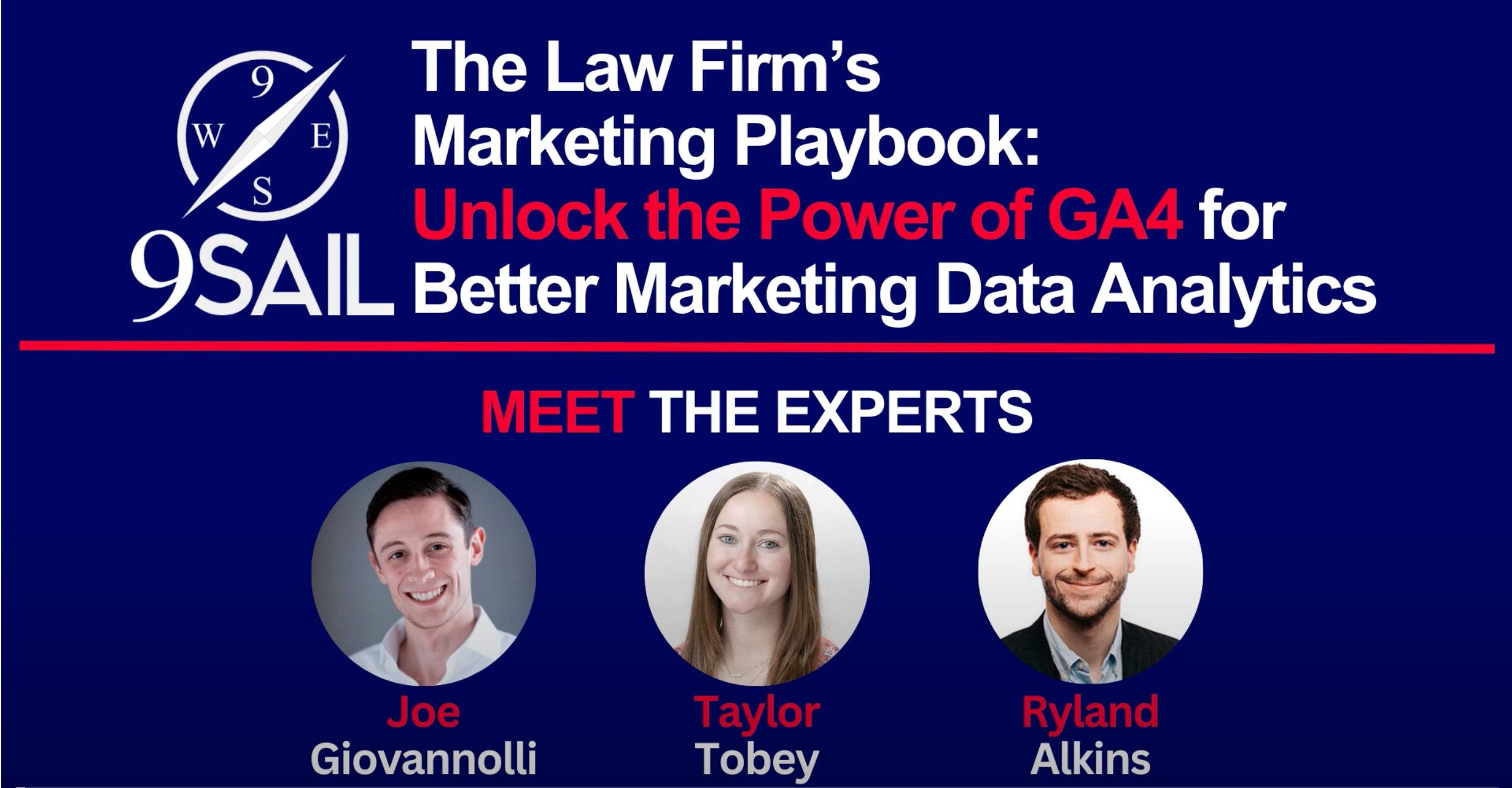Webinar Recap – “The Law Firm’s Marketing Playbook: Unlock the Power of GA4 for Better Marketing Data Analytics”
Date: August 2, 2023

9Sail is committed to helping its law firm clients navigate its most efficient and prosperous path to growth by harnessing the power of digital marketing. Click here to schedule a consultation with a 9Sail growth consultant.
Loading content... 
















